John Hurrell – 17 October, 2013
Li Xiaofei has an unusual way of putting his videos together. Often with the expansive interviewee's commentary he splices in film of the machinery, operating normally but filmed frontally. The elements look formal and elegant, a little like Thomas Demand photographs, yet with an amusing ambivalence when compared to the more disturbing images on the other side of the room.
The Shanghai artist Li Xiaofei has over the last three years made a series of documentary videos interviewing workers and managers of various factories in the Yangtse River delta, discussing the current Chinese managerial ethos (an enthusiasm for capitalism) and working conditions.
In this installation of six videos in the large downstairs Starkwhite gallery, we see two types of film: on the left, two small projections, one (Assembly Line-No.22) of noxious looking, boiling silver liquid, part of the extraction of iron ore, the other (Assembly Line-No.10 (sleeping worker)) of a snoozing labourer on a bench. On the opposite wall there are four larger projected interviews. Here we hear the views of the German owner of a cigarette paper factory (A Foreign Boss), male; the Chinese manager of a bustling floor lamination factory who was previously working in women’s health and birth control (A Womens’ Federation Director), female; a Belgian manager (A Sales Manager), female; and a Chinese worker (A Printing Plant Operator), male. The speakers seem quite relaxed and frank. There seems to be good rapport with the interviewer. Apparently Li Xiaofei is very picky about people and places he wishes to research. Some factories he visits and then rejects. They are not the right size or the management is too controlling.
In fact you get the feeling the artist likes and respects the people he is interviewing - both workers and management. They all have a sensitivity, an acute awareness of the wider picture, are observant and articulate. They are not caricatures. The camera lingers on their faces with affection. The editing cuts aren’t tight.
What they have to say is quite absorbing. The German compares the speed of change in China compared to where he came from in Germany, the Belgian talks about the lack of Chinese faith in worker initiative, the lamination manager discusses her concerns with raising her own daughter, and the printing machine worker talks about how he was cheated by management when he started.
Li Xiaofei has an unusual way of putting his videos together. Often with the expansive interviewee’s commentary he splices in film of the machinery, operating normally but filmed frontally. The elements look formal and elegant, a little like Thomas Demand photographs, yet with an amusing ambivalence when compared to the more disturbing images on the other side of the room. The shots of the functioning programmed equipment are very beautiful, a sort of glorification of the factory ethos (everything looks spotlessly clean and securely fastened), yet in the same gallery space they are placed with other moving images that allude to pollution, and interviews that refer to capitalist greed and recklessly dangerous working conditions.
In his artist statement Li Xiaofei says,”What I’m interested in and want to express is the subtle and delicate and complicated relationships between human and machines, individuals and society. Doing art and shooting on the spot allow me limitless possibilities. Be it brand new or ideas derived from some other sources they both continually provoke a desire in me to express myself.”
Sometimes the movements of the machine are mimicked by the actions of the workers. Or the workers are hidden by piles of fabric, as if the material were some sort of metaphor about the processes and politics of documentation and representation - or a sociological statement about labour conditions. Perhaps a psychological oscillation.
Here is part of a manifesto or poem by the artist that elaborates on these aspects:
Assembly lines, large or small, uphold social systems and maintain a surface appearance of order.
Machines or people constantly repeat the exact same movements.
There is a constant rotation of various different machine parts.
This movement exhibits the beauty and power of sequence and order.
The “People,” assimilated by these machines, are nonetheless working in a cheerful and enjoyable rhythm.
They perform intrinsically as if in formation.
He is surprisingly positive. Very enthusiastic. These are not the ‘dark Satanic mills’ that factories are usually thought of, with tediously boring work in a dangerous environment. The workers seem happy and the management is caring and decent. Li Xiaofei’s films are not only strangely beautiful but also surprisingly contradictory in what they have to say. Unusually astute, honest (in the way problems are acknowledged) and informative; they’re well worth spending time with.
John Hurrell
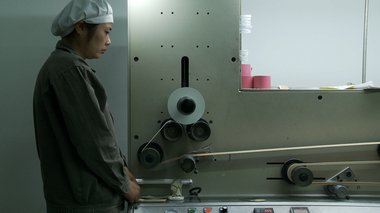
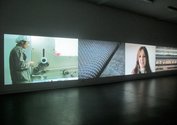
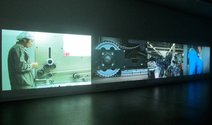
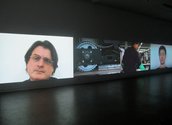
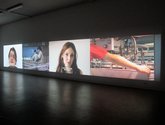
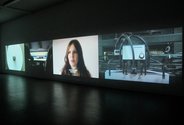
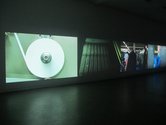
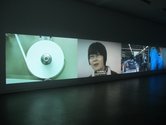
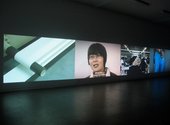
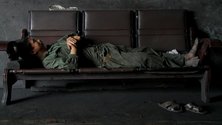
 Advertising in this column
Advertising in this column Two Rooms presents a program of residencies and projects
Two Rooms presents a program of residencies and projects



This Discussion has 0 comments.
Comment
Participate
Register to Participate.
Sign in
Sign in to an existing account.